DIY Baby chick housing
This article will walk you through how to DIY baby chicken housing that works for ducks too. This setup is not only easy, but it’s also affordable, and most of the supplies you need you might have on hand already.
Learning how to set up DIY baby chick housing is the first step for raising chickens that are healthy and happy. Learn what works great for baby chicks and ducklings, what you need, what you should avoid, and everything else in between.
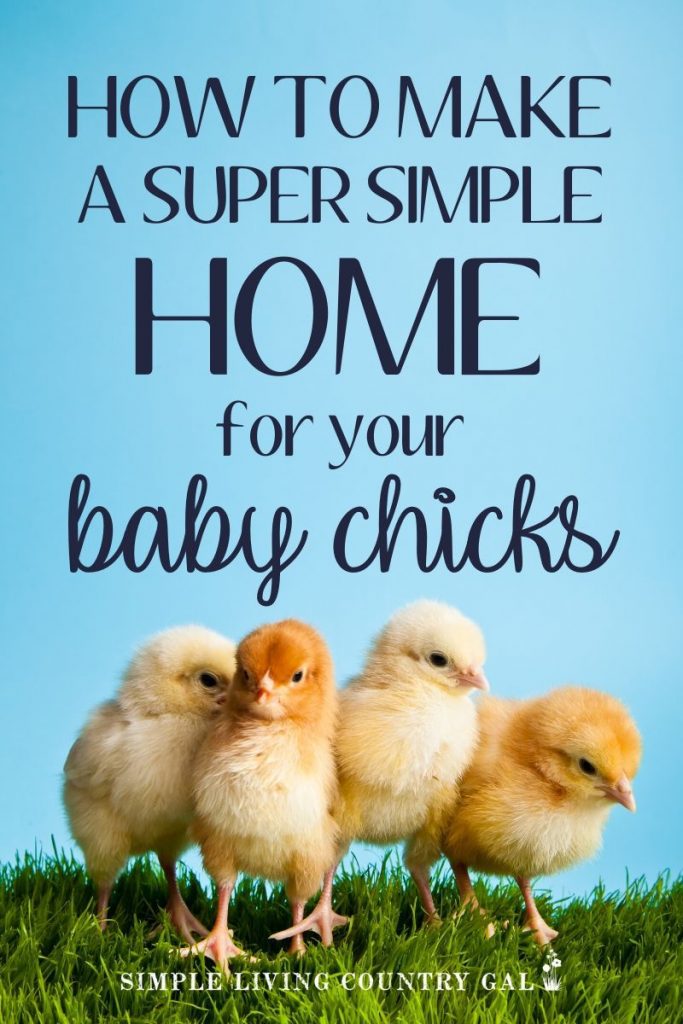
Spring is such a great time of year. The snow is melting (thank you, GOD), the days are getting longer, baby goats are being born, seedlings are sprouting, and yes, baby chicks and ducks are being brought home. In some cases, for the very first time, and if you are a first-time chick owner, you may be just a bit nervous about your new venture.
No worries, this guide will give you everything you need to know to set up a quick, easy, and affordable housing that your new baby chicks will flourish in. This is temporary housing that all chicks need to be in until they are ready to go outside into the main chicken coop.
I have been raising chickens for almost a decade now, and I thought I knew just about all I needed to know. Boy, was I ever wrong. Every year when the new chicks come to our home, I learn something new.
This year, we decided to do something a little different. We added two adorable little ducklings to our flock of baby chicks. We were told that we could raise the ducks and chicks all together without much issue. The only major thing was having a water area for the ducks to enjoy swimming in our main coop area.
We were excited to add our new ducklings and thought it would be no different from what we now have – a large flock of backyard chickens. Little did we know that our new adorable baby ducklings (whom we lovingly call Thelma and Louise) would teach us quite a bit that first year.
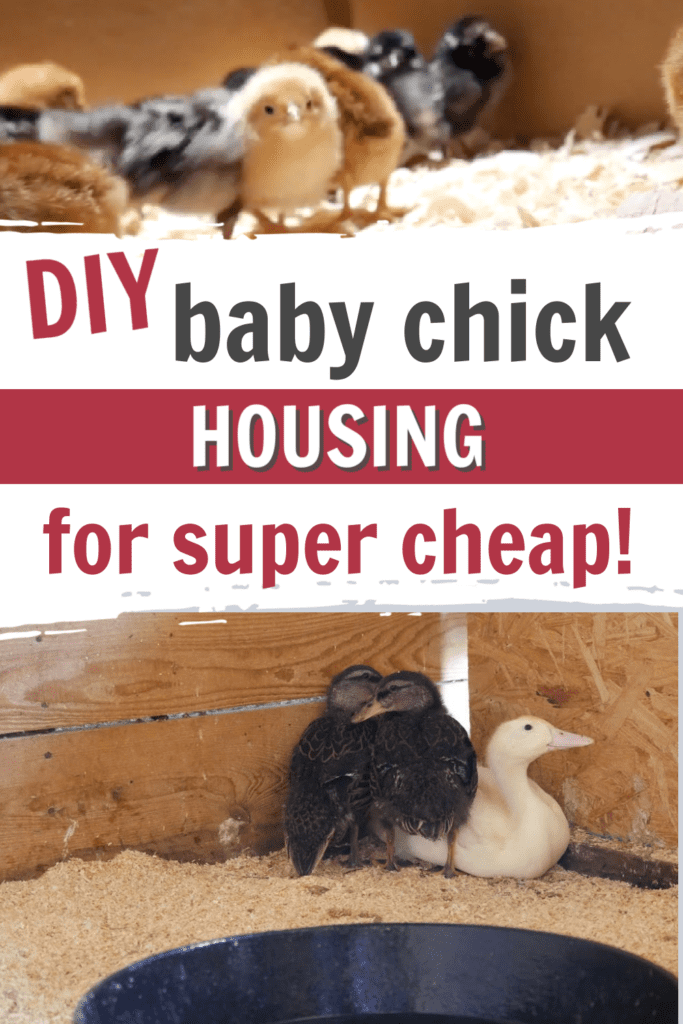
Let me just jump in here and say that from the very beginning we realized there was a HUGE difference between ducklings and chicks and what we usually used to house the chicks was just not going to work for the ducks.
Normally I keep all my little chicks in a large box using our plastic waterer and feeder found on Amazon. Baby chicks are delicate, dainty creatures that sip their water and nibble their food.
Ducklings on the other hand (and I say this with love) are clumsy and sloppy and dive into their food and water as if they have not had either in weeks.
That box I had planned on using the entire two months my chicks were indoors only lasted 1-week thanks to Thelma and Louise. They splashed so much water that the box was soon sopping wet. I needed to come up with a new box and a new system that would outlast the antics of two crazy ducklings.
DIY baby chick housing
If I have not said it before, Hubby is my hero, and more often than not, when I ask for the impossible, he pulls through with amazing speed. In this case, I asked for a bigger box with lower sides making cleanouts easier on my back.
SLCG PRO TIP: If you are new to ducks and chicks and their housing, know you will need to be in and out of their box several times a day. For that reason, I prefer to use housing that is easy for me to do just that. Feed, water, clean, and care for everyone without running a risk to my back.
That night he brought me home a box that was PERFECT!
Low enough for me to get in and out yet still high enough to keep everyone inside. I took the box and filled it with a fresh layer of wood shavings, and then placed it onto a tarp to protect the floor.
Setting up Water for Baby Chicks and Ducks
Ducks love to be in the water. Something that they realize the instant they are born. I had no idea how much they wanted to be in the water until I saw them try to climb INTO the water dish to swim.
This time around, I wanted to find a way to keep water in the box so everyone could drink, but the ducks could not spill or splash or tip it over. I did quite a bit of research and finally settled on the simplest option I could find. A grate-covered tray that would catch the water and keep the mess to a minimum.
I was so in love with this idea I immediately ran off to the store to get a couple of super-cheap cake pans and cookie racks. I believe I spent just under a few dollars on all the supplies. That is another thing I love, how inexpensive this DIY baby chick housing idea is!
Next, I took a cleaned and empty milk jug and cut my ever so neat and perfectly even windows. One on each side. This will allow everyone to drink and access the water without any issues.
Be sure to cut the window low enough that the smallest chicks can still reach the water yet high enough that it will hold enough water so you are not forced to refill it many times throughout the day.
I decided to go with a brownie tray as it is deeper than a baking sheet. On top of that, I placed a cooling rack. Be sure the rack you use has openings that are close enough so there are no stuck feet risking injury.
You will want everything to sit evenly, so be sure the remove the bedding, giving you more of a flat and even surface.
To add in a bit more protection, I placed a few pieces of plexiglass on either side. This worked great to protect the box from ducks spraying water all over.
Once I had everything set up to my liking, I filled the jug with water and placed it on top of the rack.
SLCG PRO TIP: You may notice the water inside of the milk jug is yellow, which is from the chick additives we used when our flock was young. This extra addition helps them to get a good, solid, and healthy start.
An Easy Feeding System for Baby Chicks and Ducks
I decided to do the same thing on the other side of the box with the feeders. My ducklings throw feed just as much as they throw water, and by using this same system I am able to keep feed loss to a minimum.
I chose to keep the tops off of the feeders since my ducklings are so big already at ten days and tend to bump into the top part. This means I need to feed them more often, but that is not a problem at all.
As you can see in the photo above the baby chicks (which are still relatively small) can easily walk on the grate without falling in or tripping. If you can stick your finger in easily chances are the holes are too big for your baby chicks.
Next, we added the rest of the gang and gave them time to get used to their new surroundings.
It took a bit for everyone to find the water. I need to do a couple of beak dips to get the ball rolling. A beak dip is when you gently dip your chick’s beak into the water. This shows them where it is and makes it easier for them to find it. More often than not, I only need to do this with one or two chicks. As they go up to drink, the others follow suit, and within a few minutes, all the chicks find the water.
The feed setup was much easier for them to find since I did nothing new other than placing it up on the grate. They were able to smell the feed and begin eating right away.
Setting Up Heat Lamps in Your Baby Chick Housing System
The final step was to get the heat lamps set up and at a good height. Remember you need to keep the temperature at a solid 95 degrees for the first two weeks. After, you will want to decrease the temp by 5 degrees every week until the temp matches yours outside.
Once your chicks and ducklings are acclimated to the outside temperature and are at a size you feel comfortable with, you can move them out to the coop.
DISCLAIMER: Please be very, VERY careful when using heat lamps. Heat lamps are hot and will start a fire almost instantly if they are too close to something flammable or if they fall into something flammable. Make sure your heat lamps are solid, secure, and anchored.
If you are using heat lamps, employ every precaution you can. It is better to be overly safe than to have a disaster on your hands. We use zip ties, metal safety clamps, and a heat-proof plastic cover over our housing. We also check the chicks quite often throughout the day and night. Heat lamps get very hot, and I cannot stress enough how important it is to be safe.

Keeping everyone inside where it is safe.
Every now and then, you will have a few over-adventurous chicks or ducklings that try to get out of their housing. For that reason, I like to have a cover on our box. We use a sturdy heat-proof rack that doubles as a guard to keep the chicks and ducklings inside and stop the heat lamps if they do happen to break loose and fall.
740 Little Giant Screw-On Poultry Waterer Base Bundled with Little Giant Screw-On Poultry Jar Heavy Duty Translucent Plastic Container | 1L Chick Waterer Set | Perfect for Chicks, Quail, and Ducks



Where should you keep your baby chick housing?
Usually, chicks are purchased in the spring, so they are laying eggs by the end of summer. That means most people are bringing home chicks when the weather is cold, damp, and miserable. For us, that means snow is still falling, making things even more precarious.
Because of this, I suggest keeping the chicks indoors until the temperatures are a bit more tolerable. If you have a mudroom or other area that is free from little hands and pets, you might be able to start with your flock indoors as you wait for the weather to warm up a bit.
Storey’s Guide to Raising Chickens, 3rd Edition


If you choose to house your chicks inside, I have a word of caution. Baby chicks are extremely dusty. I can not even begin to tell you how much dust these birds make. For that reason, you will want to keep your chicks in an area that will not cause a big mess and an even bigger headache to deal with.
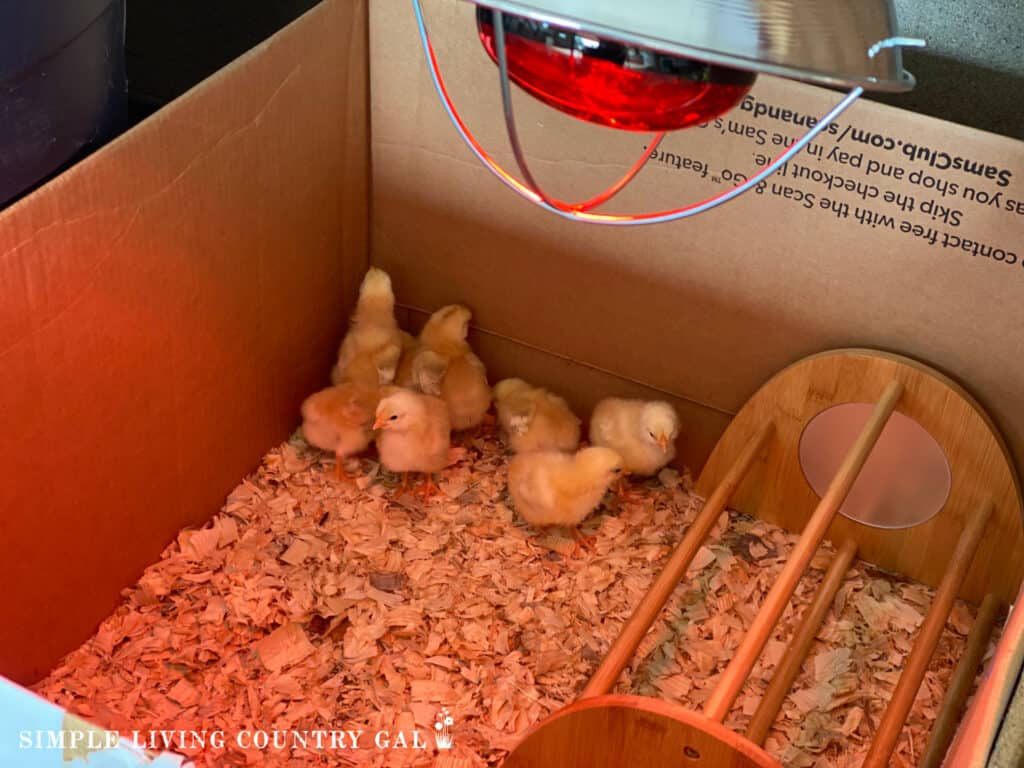
We have tried a few areas in our home and have found that the basement works best for us. This keeps the dust out of the main living area while providing enough warmth and protection for the chicks and ducks.
Once your chicks and ducklings have acclimated to the outside temperature and you feel they are old and hardy enough, it is time to move them out to the coop. If you have a safe and secure coop, your hens and ducks will be fine outside.
SLCG PRO TIP: If you add chicks in with older hens, you will want to ensure your chicks are close to fully grown. New chickens have a better chance of being bullied and/or henpecked to a point that can cause serious injury. Be sure your new chickens are large enough to defend themselves.
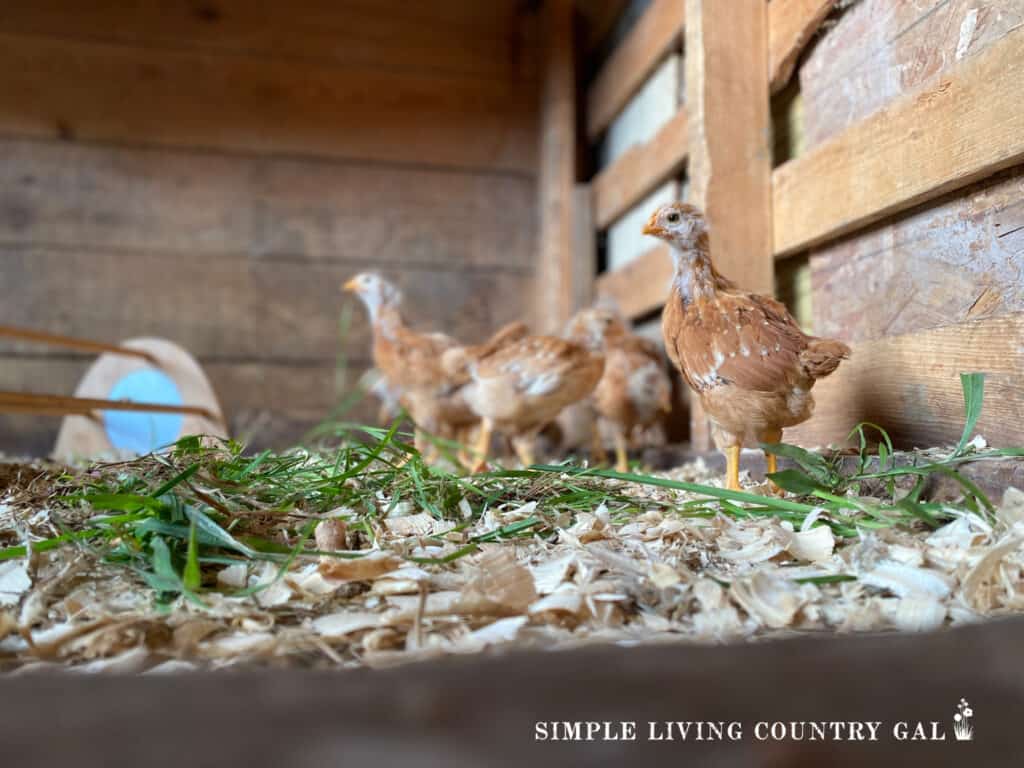
When is the best time to add new chickens or ducklings to your established flock?
The best time to add new chickens to a coop is at night when everyone is sleeping and docile. Chickens are very sound sleepers and do not have good night vision. That means you can add new members without much of a fuss. Simply take your new chickens inside the coop and put them on the roost. Come morning, most of the flock will think the new gals were there all along and, more often than not, leave the newbies alone.
You cannot do this with ducks, however, as they do not like to roost. Ducks prefer to stay in the group and will usually find a corner to sleep in that is out of the way of the rest of the flock.
Baby Chick and Duck Housing Supply List
Raising baby chicks and ducklings is not only fun but rewarding too. Knowing what you are in for before you bring that first chick home and having a sturdy setup is key.
As long as your chicks are safe, have plenty of fresh water, are warm, and have access to food, your flock will grow into a solid egg-laying group that will reward you for years to come.
I hope you found this baby chick housing list helpful and that you are ready to start your new flock. And if you want even more help with raising chickens, be sure to check out the articles below!

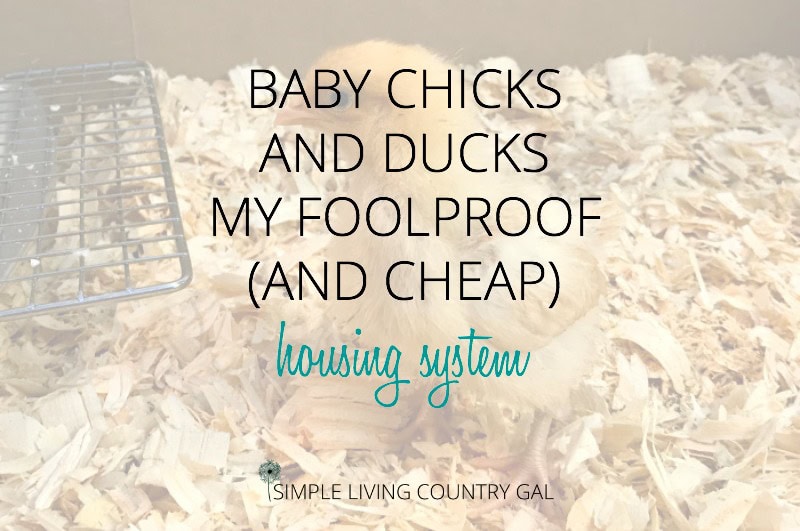
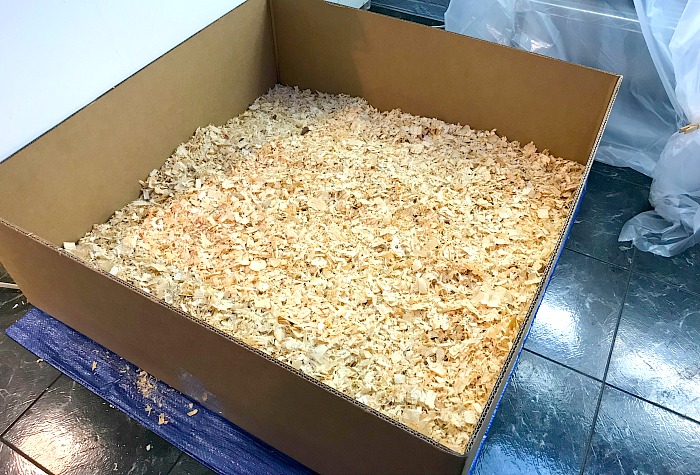
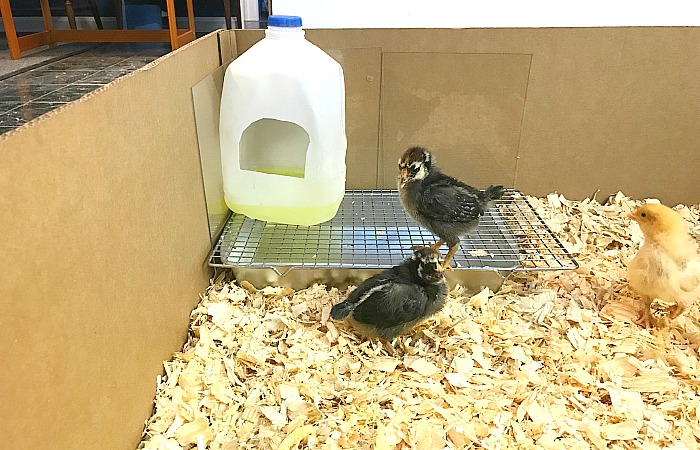
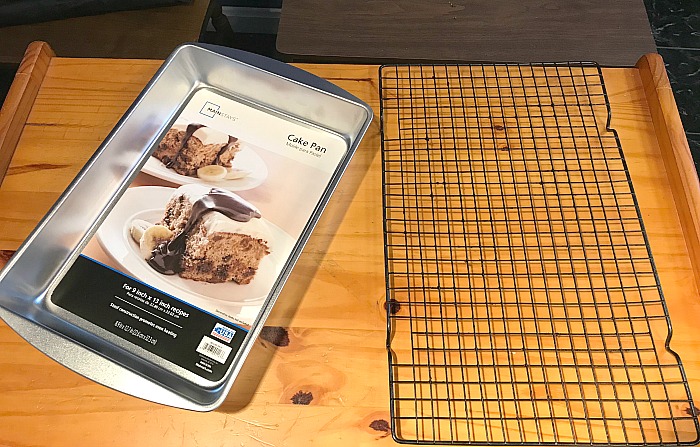
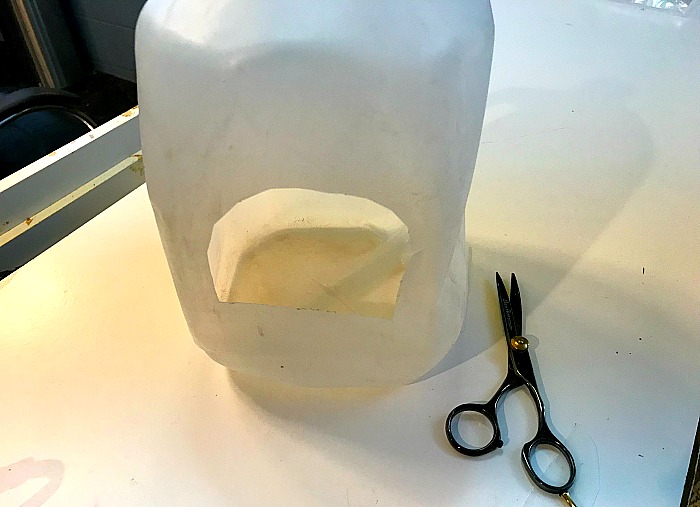
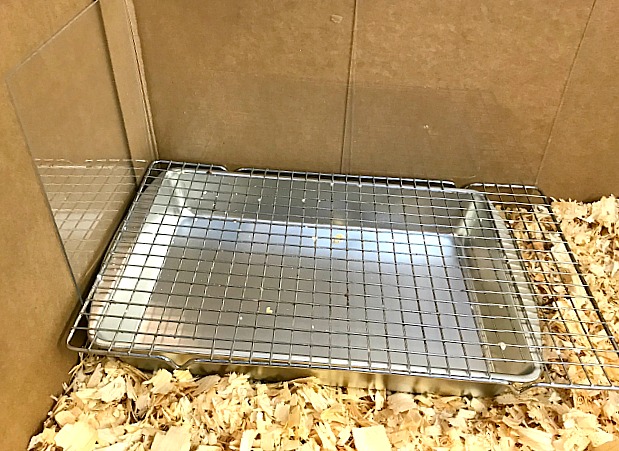
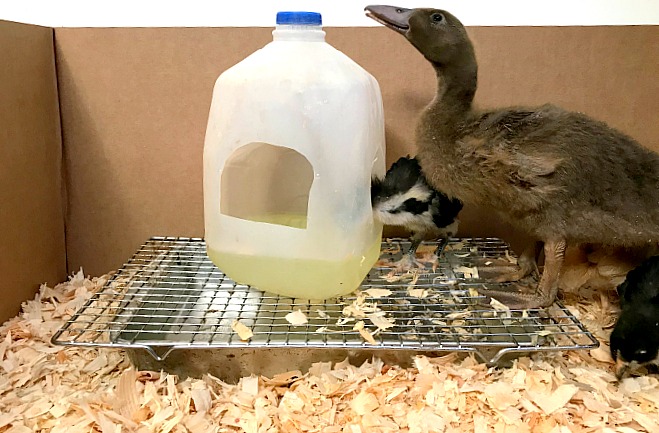
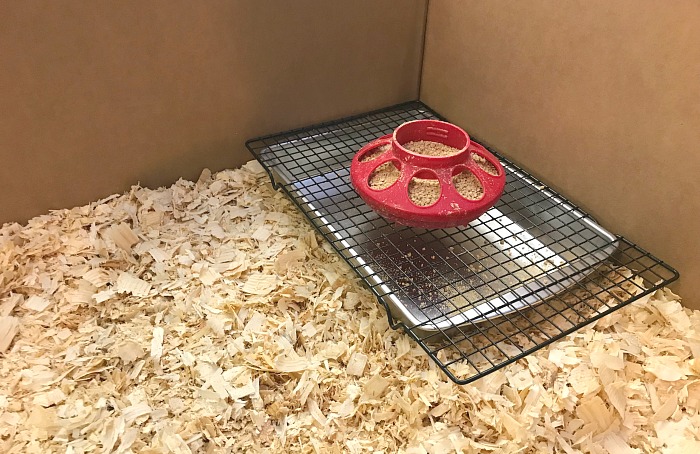
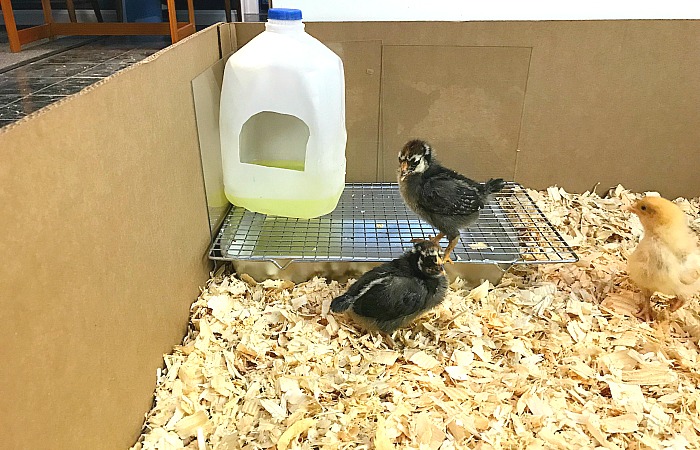
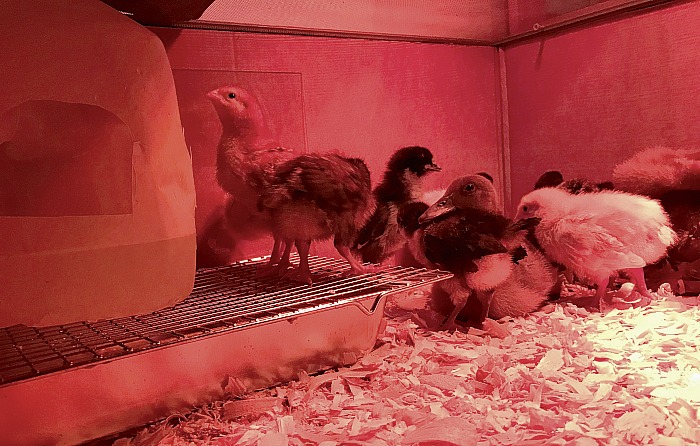
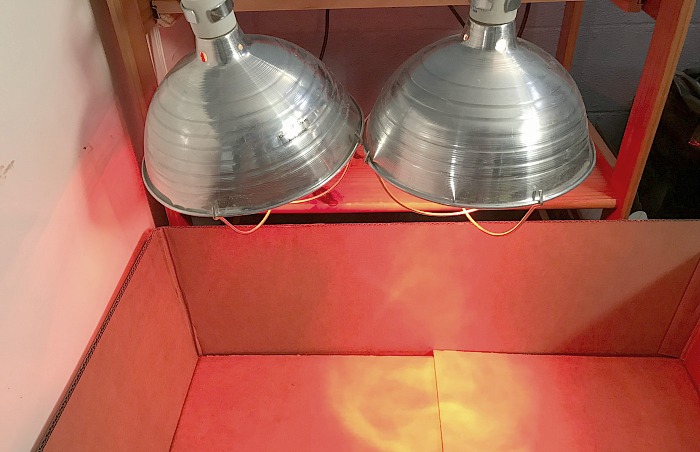









I just got my first chicks a few weeks ago and definitely struggled with finding a safe but cheap option. I did end up splurging for the hover heater cause of the risk with heat lamps. I appreciate the the cake pan and cookie rack! I will definitely try that as they’re putting bedding in their waterer. Thanks for this information. Found you on the blog hop!
Hi, Leilani!
Yes, no one really warned me how messy chicks can be. And the dust? Oh boy!! Wasn’t prepared for that on at all! Hope this setup helps you as much as it has helped me!
Thanks for stopping by!
Tracy Lynn
I just bought ducks and chickens. & I’m so glad I found this read. Super helpful…especially since ducks are so dirty. Curious how long I should wait to join both though? Ducks are probably 2 weeks older than the chicks? Thanks for posting!
Hello, Kami!
I would join them early so they adjust to being together. Just keep a close eye on them for a bit to ensure they do not pick on anyone. You just never know with animals!
Enjoy!
If you have any more questions you can email me directly for faster responses, [email protected]
Tracy Lynn